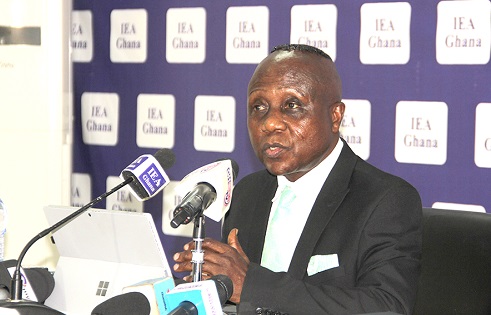The Institute of Economic Affairs (IEA) has called on the Bank of Ghana’s Monetary Policy Committee (MPC) to place a cap of 5 percentage points on the lending rates of commercial banks.
IEA believes such a move is key in addressing the recent call by President Nana Akufo-Addo, and borrowers on the long-standing issue of high lending rates in the country. It proffer that, one key measure that should be considered is a temporary regulation of the lending rate spread is to compel banks to follow the Policy Rate more closely.
The latest surveys by the Ghana Association of Industries captured that, the high lending rate is among obstacles to doing business in Ghana, making it a major impediment to investment and economic growth. But, the Director of Research at the Institute believes the high lending rate is a result of competitive government borrowing, structural inefficiencies in the banking industry that lead to high operational costs and high lending risks and associated loan defaults.
“I’m asking the monetary authority to impose a ceiling of five percentage points on the spread between lending rates and the policy rate so at the next monetary policy committee meeting if they decide that they are maintaining the rate, I want them to task all banks to bring their lending rates to 5 percentage points within that rate”, Dr John K. Kwakye said when speaking during a policy forum organized by the IEA last week.
However, Dr Kwakye stressed that such a move should be temporary and be changed to suit the circumstances of the economy.
IEA further said, there is the need to restrain government borrowing by entrenching fiscal discipline as well as an improvement of inefficiency in the financial sector through improved management practices.
Apparently, Chief Executive Officer of the Ghana Association of Bankers, John Awuah in his reaction said such a move would not augment well for the country’s economic development.
He suggested a continuous approach of policies should be used to lead to the gradual reduction of lending rates, as has been seen over the past five years.
“The talk has been that banks’ lending rates are high, and we think that is a bit misplaced because we are not taking the totality of all the factors that generate that lending rate into consideration. As it is when market rates have come done the lending rate follows and if you check the trends in the last five years, you will see clearly that the bank lending rates have reduced from a cost of 28% or 29%, now we are talking about 20%. A lot of banks are lending to customers at below 20%. So it is a matter that I think the banking association has not sold our story properly, and I think the general rhetoric has been lending rates have been at some levels that are unmanageable. We think that if market fundamentals continue moving in the downward direction, lending rate will automatically follow”.
By Adnan Adams Mohammed

